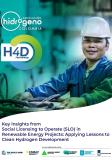Publications
This is a compendium to the Primer for Space Cooling. The Primer was developed in the context of the rapidly growing demand for space cooling and the critical need for access to affordable but sustainable space cooling solutions—that is, solutions that can respond to the need for greater access to cooling, especially in large parts of the developing world facing increasingly high temperatures, while avoiding the considerable and disruptive impacts on energy systems and the accompanying greenhouse gas emissions that would result from business-as-usual growth. For those interested in learning more about the interventions that could accelerate the pace of sustainable space cooling, this compendium contains detailed information covering the 20 interventions presented in the Primer, with over 100 real-world examples of space cooling–related practices that have been implemented.
Cooling-specific examples have been presented when available and demonstrated at sufficient scale to enable relative success to be assessed, but when these are unavailable, examples from adjacent sectors have been included, with an explanation of how the lessons from those interventions could be applied to advancing sustainable space cooling. The compendium also provides readers with additional resources and details on space cooling interventions.
Related | Primer for Space Cooling
Compendium to the Primer for Space Cooling (English). Knowledge Series; no. 30-20 Washington, D.C.: World Bank Group. http://documents.worldbank.org/curated/en/927791601356603545/Compendium-to-the-Primer-for-Space-Cooling



